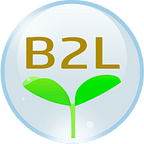A bowl of noodles, A need for change
Somen (素麺) is the angel hair pasta of the Japanese noodle world, also known as ‘Japanese vermicelli’. These thin, white, wheat noodles measure to 1 mm thickness and are perfect for a quick, easy, chilled meal for the summer (or at any time of the year)!
According to Voice Cream, somen is the oldest style of noodle in Japan — originating in the Nara prefecture of the southwestern Kansai region. Somen first entered the Japanese culinary vernacular from China during what’s called the “Nara era” of the 6th century.
Upon its first iteration somen was actually made out of rice flour, or mochi flour, said The Japan Times. As with most popular Japanese food, these noodles made their way through the Imperial courts for centuries until they started being made with wheat flour during the 10th-12th century. After that, somen grew in popularity within the Buddhist temples and then disseminated through the regular public by the Edo era — when Tokyo became the final capital of Japan.
You may wonder, how did they get the strands so thin before there were machines? Well, simply: oil.
The dough made of flour, salt, and water is stretched gently and repeatedly with a neutral oil until fine strands form. In its antiquity, somen was stretched into one long noodle but nowadays you can get a pack of dry somen at an easily edible length from most Asian grocery stores.
To prepare: all you have to do is bring a small pot of water to a boil, throw in the noodles for one to two minutes, then drain! After that, you can rinse them under cold water to eat with a chilled dipping broth called mentsuyu or put them in a hot soup base for a warm bowl of noodles. If you’re looking to add some bulk to your next stir fry, add the somen to the pan for a hearty Okinawa-style chanpuru!
It doesn’t take much work, or much water, to fix yourself up some somen — which is a good thing considering the ever impending crisis that is water depletion.
We need to talk about Water
Japan is known for wonderfully soft waters; and excellent waters help create the excellent foods people love all over the world. However, with the increase in droughts and heatwaves, the shortages in this precious resource are affecting more and more people in the here and now.
According to the World Health Organisation, currently one in three people of our 7.8 billion global population lack appropriate means to have safe drinking water. And despite being a country known for a lack of natural resources, the average habits of a Japanese person adds up to an exorbitant 250 litres a day. (via The Japan Times)
The International reported on a documentary titled World’s Water Crisis — which named Tokyo as one of the top 11 cities to quite literally run out of water within the coming decades. This list spreads across the globe, no matter the culture or economy.
The article explains, “For instance, while Cape Town showed the world the horrific impacts of a water crisis, it also showed us the importance of our decisions and efforts. Capetonians cooperated to implement radical water conservation methods, cutting back daily water use per person to just 50 litres per person”.
The East African country of Eritrea ranks globally the worst in water access. With relatively low rainfall, a whopping 80.7% of the population are missing basic drinking and sanitation needs and services, said The Borgen Project. This lack of clean water leads to higher infant mortality, widespread gastrointestinal diseases from tainted drinking sources, and an inability to economically grow agriculture at a sustainable rate.
But living in a dry, under-developed country without the benefit of flowing rivers isn’t the only mainstring in this dire situation.
The stereotypically drizzling countries within the British Isles are also on the brink of losing their constant access to clean water. In fact, it’s only with the recent hosepipe “embargo” in southern England that the water issue returned to the common conversation and brought with it another worry to the post-pandemic lifestyle.
Big Issue reports that concerns like increasing summer temperatures, faulty water infrastructure, and stalled plans for progressive water purification mechanisms have been an ever increasing affair that may soon affect domestic land, industry, and life — an affair that may not be salvageable with last minute, ersatz solutions.
So what can we do right now? Well for one, use less water. Some methods of reduction (outside of just taking shorter showers or turning off the tap when brushing your teeth) are:
- Replace appliances like washers, sinks, and showerheads with ones that economise energy and water output.
- If you have a lot of dishes to wash up, use an energy efficient dishwasher instead of doing them by hand under a running sink. If you’re without a dishwasher, soak the dishes in sudsy water before cleaning and only turn the tap on for that final rinse.
- Only use toilets for relieving yourself; an average toilet can use 75 litres of water per flush so throw away your dental floss elsewhere!
Click here to read Earth Easy’s list of water-saving tips!
In these times of rising prices for everything, reducing your water consumption is a win-win for you and the world. And after your hard work, why not enjoy a bowl of somen?
Next up, soba. Buckwheat is one of the essential grains in Japan that can be transformed into almost anything; most famously noodles! Check back on August 21st at 12pm EST to learn more about this healthy whole grain and what you can do with it at home! In the meantime, follow us on Facebook and Instagram for more fun facts, photos, and tidbits!
